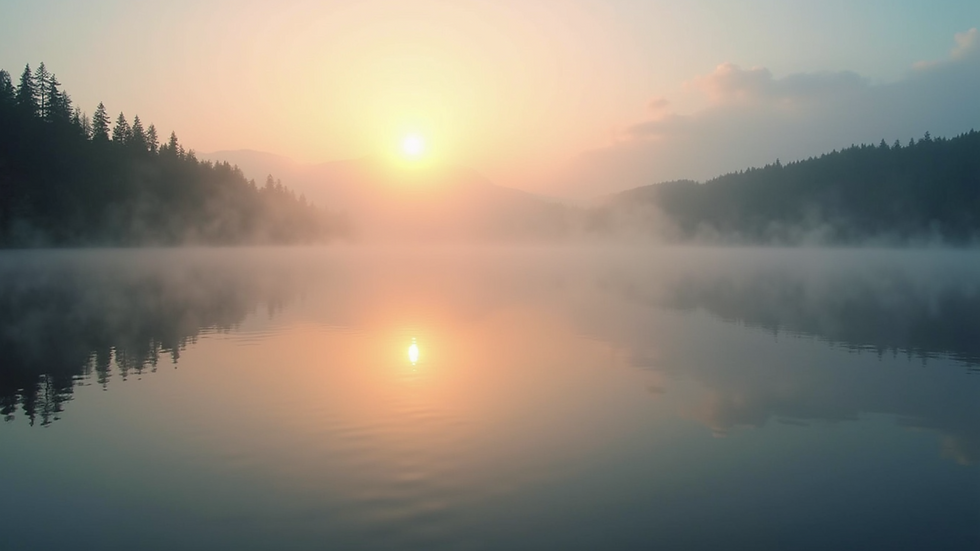Capturing Nature's Beauty: Seasonal Photography Insights
- apwarnett
- Sep 20
- 4 min read
Nature is a canvas that changes with the seasons. Each time of year brings its own colors, textures, and moods. For photographers, this is an exciting opportunity to capture the beauty of the world around us. Whether you are a beginner or a seasoned pro, understanding how to photograph nature in different seasons can elevate your skills and enhance your portfolio.
In this post, we will explore tips and techniques for capturing stunning seasonal photographs. We will discuss the unique characteristics of each season, the best times to shoot, and how to make the most of natural light. Let’s dive into the world of seasonal photography.
Spring: A Time of Renewal
Spring is a season of rebirth. Flowers bloom, trees regain their leaves, and wildlife becomes more active. This vibrant season offers countless opportunities for stunning photography.
Best Times to Shoot
The golden hours, just after sunrise and just before sunset, are ideal for capturing the soft light that enhances colors. Early mornings are particularly magical in spring, as dew glistens on petals and the air is fresh.
Tips for Spring Photography
Focus on Flowers: Close-up shots of blooming flowers can create beautiful images. Use a macro lens to capture intricate details.
Wildlife: Spring is a great time to photograph animals. Look for birds building nests or young animals exploring their surroundings.
Landscapes: Capture the lush greenery and colorful blossoms. Wide-angle shots can showcase the beauty of spring landscapes.

Summer: Vibrant and Lively
Summer is full of life. The days are long, and the sun shines brightly. This season is perfect for capturing vibrant colors and dynamic scenes.
Best Times to Shoot
Mid-morning and late afternoon are great for summer photography. The light is bright but not too harsh, allowing for clear images without overexposure.
Tips for Summer Photography
Capture Movement: Summer is a time for outdoor activities. Photograph people swimming, hiking, or playing sports to convey the energy of the season.
Use Natural Light: Take advantage of the bright sunlight. Experiment with shadows and highlights to add depth to your images.
Golden Hour: The golden hour in summer can create stunning portraits. The warm light adds a beautiful glow to skin tones.
Autumn: A Palette of Colors
Autumn is known for its stunning colors. The leaves change from green to vibrant reds, oranges, and yellows. This season offers a unique opportunity to capture the beauty of nature in transition.
Best Times to Shoot
The best time to photograph autumn colors is during the early morning or late afternoon. The soft light enhances the warm tones of the leaves.
Tips for Autumn Photography
Focus on Foliage: Capture the changing leaves. Use a wide-angle lens to showcase the colors of entire trees or forests.
Textures: Autumn brings unique textures, from crunchy leaves to misty mornings. Experiment with close-ups to highlight these details.
Landscapes: Wide shots of landscapes can capture the essence of autumn. Look for scenic views that showcase the vibrant colors.
Winter: A World of Stillness
Winter transforms the landscape into a serene wonderland. Snow blankets the ground, and the world feels quiet. This season offers a different kind of beauty that can be captivating.
Best Times to Shoot
Overcast days can be ideal for winter photography. The soft light reduces harsh shadows and creates a peaceful atmosphere.
Tips for Winter Photography
Capture Snow: Snow can create stunning images. Look for patterns and textures in the snow, and consider shooting during snowfall for a magical effect.
Wildlife: Winter is a great time to photograph animals in their natural habitat. Look for tracks in the snow or animals foraging for food.
Silhouettes: The low winter sun can create beautiful silhouettes. Experiment with backlighting to capture striking images.
Techniques for All Seasons
While each season has its unique characteristics, there are techniques that can enhance your photography year-round.
Composition
Rule of Thirds: Use the rule of thirds to create balanced and interesting compositions. Place your subject off-center for a more dynamic image.
Leading Lines: Use natural lines in the landscape to guide the viewer's eye through the photograph.
Lighting
Natural Light: Always consider the quality of light. Soft, diffused light is often more flattering than harsh sunlight.
Golden Hour: The golden hour can enhance colors and create a warm glow. Plan your shoots around this time for the best results.
Equipment
Lenses: Invest in a good quality lens. A versatile zoom lens can be great for capturing a variety of scenes.
Tripod: A tripod is essential for low-light conditions or long exposures. It helps keep your camera steady for sharp images.
Post-Processing Tips
Editing your photos can enhance their beauty. Here are some simple tips for post-processing:
Adjust Exposure: Make sure your images are well-exposed. Brighten or darken as needed to achieve the desired effect.
Enhance Colors: Use editing software to enhance colors. Be careful not to overdo it; aim for a natural look.
Crop for Composition: Don’t hesitate to crop your images to improve composition. Focus on the most interesting parts of the photo.
Final Thoughts
Capturing nature's beauty through seasonal photography is a rewarding experience. Each season offers unique opportunities to explore and express creativity. By understanding the characteristics of each season and applying the right techniques, you can create stunning images that reflect the beauty of the world around you.
So grab your camera, head outside, and start capturing the magic of nature in all its seasonal glory. Happy shooting!


Comments